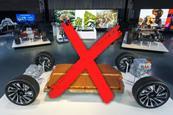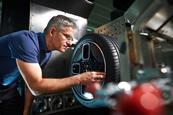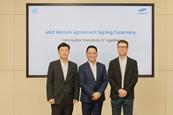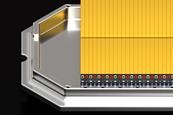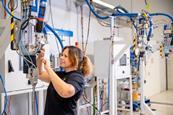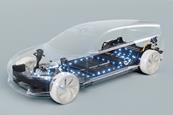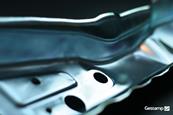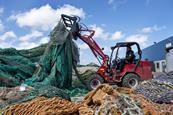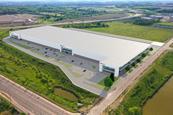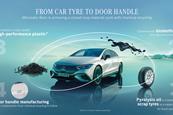Composites
Henkel provides next-generation gap filler solutions for automotive electronics
As vehicles evolve into high-performance computing platforms, thermal management is critical. Henkel’s next-gen gap fillers are engineered to handle rising heat loads in compact, power-dense automotive electronics, tackling heat in compact ECUs and battery modules, supporting safe, high-density automotive electronics for EVs and ADAS.
Henkel’s advanced thermal management for ADAS reliability
ADAS domain controllers generate extreme heat, threatening performance and longevity. Henkel’s latest thermal interface material ensures efficiency and reliability.
Smart factories and partners power JLR’s circular seat foam
JLR’s Circularity Lab is redefining sustainability through digital tools and collaboration, turning seat foam waste into a scalable closed-loop material solution.
BMW partners for innovation in rare earths for vehicle production
BMW i Ventures invests in Phoenix Tailings, advancing sustainable rare earth refining in the US to secure critical metals for sustainable automotive production and supply chain
Using algae to turn CO2 into sustainable carbon fibres
Researchers transform CO2 into high-quality carbon fibres using algae, offering CO2-negative solutions for automotive sustainability.
10 year green energy for PowerCo’s Salzgitter battery plant
PowerCo signs deals with Alterric and EnviTec Biogas to supply its Salzgitter gigafactory with 3 terawatt hours of green energy, slashing CO2 emissions by 115,000 tonnes annually.
Precise assembly processes for battery packs
Battery manufacturers face tough challenges. SAMES has the solutions. From precise application to high-volume production, their advanced systems are redefining the industry.
GM ditches Ultium in EV strategy revamp as ICE persists
General Motors will retire its Ultium brand in favour of a multi-chemistry EV battery approach, while reaffirming steady profits and rising EV sales amid strong ICE vehicle demand.
Korean consortium aims to revamp EV battery production
A groundbreaking project between Hyundai Motor, Kia, Hyundai Steel, and EcoPro BM seeks to advance EV battery production by directly synthesising LFP cathode material, promising reduced emissions, lower costs, and enhanced performance.
BMW: ‘Designing for Circularity’ to lead in sustainability
BMW leads the charge in sustainable automotive production. Their ’Design for Circularity’ approach focuses on recycled materials, reduced parts, and optimised disassembly. Join us as we explore how BMW is shaping a greener future. Ilkhan Ozsevim speaks to Head of Engineering, Roberto Rossetti.
The race towards sustainable tyre production
This is how players in the tyre industry are pioneering sustainable production from recycled materials to innovative manufacturing, to reduce carbon footprint.
GM and Samsung SDI seal $3.5B deal for Indiana EV battery plant
GM and Samsung SDI have finalised a $3.5B partnership to build a high-capacity EV battery plant in Indiana, aiming to power future electric vehicles.
Korea’s LG, SK On and Samsung lead Prismatic battery revival
South Korean battery powerhouses LG Energy Solution, SK On, and Samsung SDI are driving a resurgence in prismatic battery technology, challenging the dominance of other battery formats in the EV market.
Unipart strengthens UK lightweighting production expertise
Unipart acquires Formaplex to bolster UK polymer production, driving innovation in automotive lightweighting for ICE and EVs.
Stryten and Dragonfly agree to electrify US automotive production
Stryten Energy teams up with Dragonfly Energy to expand reach of ‘Battle Born Batteries’ into new markets, offering complete lithium battery solutions.
Top 5 EV battery chemistries and formats across the world
Battery technology is paramount to the electrification drive from cell chemistries such as Lithium Iron Phosphate (LFP) and Lithium Nickel Manganese Cobalt Oxide (NMC) to architectures like prismatic or cylindrical cells. We look at cost, performance and more.
How Ford’s Marc Dugas supercharges battery pack assembly
Marc Dugas, Ford’s Battery Pack Assembly Specialist, is enhancing battery assembly using a cybernetic systems thinking heuristic known as POSIWID.
Sames solves for BMW & Mercedes: Adhesive tech in bodyshop & glazing
Sames innovates with custom adhesive solutions for BMW & Mercedes, enhancing carbon fiber body assembly and glazing applications with tailored systems and rigorous testing.
Exclusive: BMW Group improves efficiency with additive manufacturing gripper
AMS visited BMW Group’s Additive Manufacturing Campus and plant in Munich to see it 3D-printed bionic robot grippers, which are saving costs and emissions and improving efficiency across its plants.
Changing dynamics– developing the next generation of vehicle architectures
Building electric vehicles has demanded big changes in OEM production operations and increased support from tier suppliers
The co-evolution of EVs, architectures and production processes
Electric vehicles are reshaping manufacturing norms, from platform flexibility to crash protection systems, challenging traditional designs and material choices amidst evolving battery technologies. ArcelorMittal and Gestamp dive into challenges and solutions.
Is sodium-ion the future of battery tech? - Stellantis Ventures all-in on Tiamat
France’s Tiamat has taken the spotlight with its advanced sodium-ion battery cell chemistry, awarded by Stellantis for its potential to offer a lower cost per kWh and an eco-friendly alternative to lithium-ion. Stellantis Ventures, the corporate venture fund of automotive giant Stellantis N.V., has recently announced strategic investment in Tiamat, signaling a strong belief in the sodium-ion technology’s potential.
The state and stipulation of automotive production: Retrospect 2023 to prospect 2024
In 2023, the automotive industry underwent a transformative journey, adapting to trends such as sustainable materials, electric vehicle dominance and digitalisation. But what clues does 2023 provide about the vehicle manufacturing landscape in 2024?
Additive manufacturing and simulation technologies: an agile and resilient powerhouse in engine development
Punch Torino elevates automotive engine production through collaboration with Markforged, a leader in additive manufacturing. This partnership fuels the creation of 3D-printed tools, including camshaft locking tools and simulation technology. By tackling crucial challenges and streamlining design iterations, the partnership achieves enhanced efficiency, cuts costs and contributes to the promotion of sustainable mobility within the automotive industry. Here’s how…
New materials drive electric motor development
Original equipment manufacturers need electric motors that are more energy-efficient and power-dense than those currently available
Battery production and design need to be optimised together, says Volvo Trucks and ABB
Experts from the truckmaker and automation specialist pointed to the benefits of aligning battery engineering and production processes in an AMS livestream.
Ford partners with EcoPro BM and SK On to build cathode plant in North America bolstering EV SC in region
The new plant marks Ford’s first investment in the region and is part of the OEMs wider objective of localising key battery raw materials processing operations in closer proximity to its EV production hubs.
GM announces $60m Series B investment in AI-powered battery materials trailblazer Mitra Chem
GM and Mitra Chem will work together to develop “advanced iron-based cathode active materials (CAM), like lithium manganese iron phosphate (LMFP), to power affordable and accessible EV batteries compatible with GM’s EV propulsion architecture, the Ultium Platform.”
Shaping the future – Developing electric vehicle architectures
In our AMS Evolution Livestream experts from ArcelorMittal and Gestamp tackle EV production challenges and explain how digital tools, new technologies, processes and materials innovations could help solve some key issues
Form and function: Developing production processes and structures for electric vehicle architectures
The new electric vehicle architectures are also continuing to evolve as vehicle makers strive to find the optimum balance between platform flexibility, while also being viable for high-volume production. To get some insights in to this ongoing process AMS spoke with Paul Belanger, Gestamp’s R&D Director for North America
Re-evaluating recycled materials
Carmakers are increasingly looking into ways of reducing the environmental impact of their vehicle manufacture – and one way to do this is by using more recycled materials in their cars. But how can they go about this?
Magna to build new battery enclosures facility in Canada to support Ford F-150 Lightning production
The company will also manufacture battery enclosures for GM’s Silverado EV in St. Clair, Michigan, adding to existing battery enclosure production for the Hummer EV
Mercedes looks to chemical recycling to further develop circular manufacturing operations
The carmaker says it is working to increase the proportion of recycled materials in its car fleet to an average of 40% by 2030




































